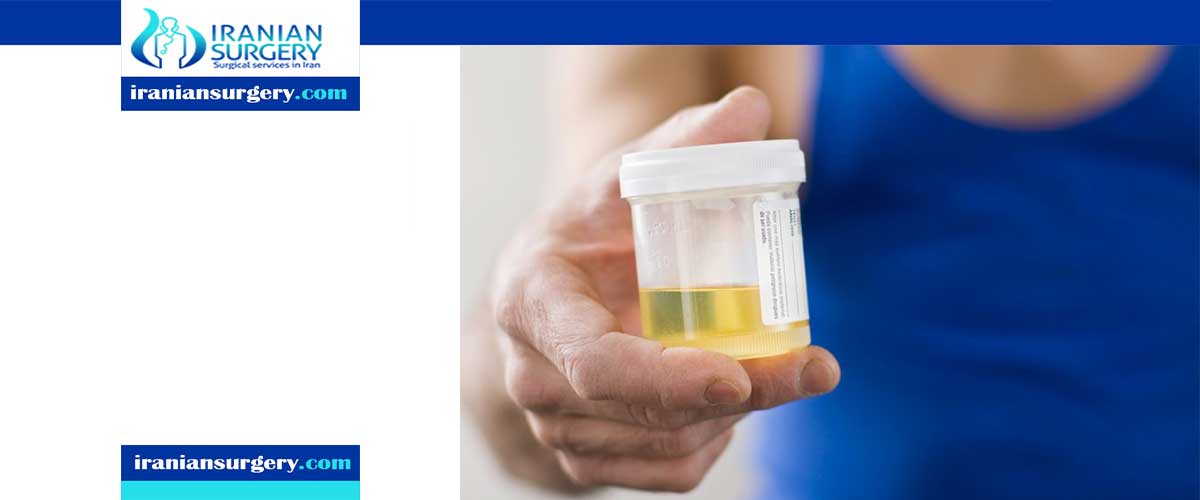Urine Tests

Urine Tests
Overview
A urinalysis is a test of your urine. A urinalysis is used to detect and manage a wide range of disorders, such as urinary tract infections, kidney disease and diabetes.
A urinalysis involves checking the appearance, concentration and content of urine. Abnormal urinalysis results may point to a disease or illness.
For example, a urinary tract infection can make urine look cloudy instead of clear. Increased levels of protein in urine can be a sign of kidney disease. Unusual urinalysis results often require more testing to uncover the source of the problem.
A urinalysis has three parts:
- Visual examination of the urine sample for color and clearness. Blood may make urine look red or the color of tea or cola. An infection may make urine look cloudy.
- A dipstick examination, which uses a chemically treated strip. Strips can check for many things in addition to protein and glucose including: pregnancy, because a hormone that is only made by pregnant women can be found; certain legal and illegal drugs that are processed by the kidney; pH is a measure of the amount of acid in the urine. An abnormal pH may be a sign of kidney stones, urinary infections, chronic kidney disease or certain disorders that affect growth and development in children; creatinine gives an estimate of the concentration of your urine, which allows for a more accurate protein result. Creatinine is a by-product of normal muscle activity, which is found in the urine and blood; bacteria and white blood cells are signs of infection.New dipstick tests don't just reveal that a substance exists in the urine; they also estimate how much of the substance is there. If there are large amounts of glucose, protein, or red blood cells, it is a warning that something is wrong.
- Urinalysis also includes examining a small amount of urine under a microscope. Some of the things that may be seen in a microscope include:
- Red blood cells,which may be a sign of kidney diseases that damage the filtering units of the kidneys, allowing blood cells to leak into the urine. Blood in the urine may also be a sign of problems such as kidney stones, infections, bladder cancer or a blood disorder like sickle cell disease.
- White blood cellsare a sign of an infection or inflammation in the kidneys, bladder or another area.
- Bacteriais usually a sign of an infection in the body. Normal urine does not contain bacteria.
- Crystalsthat are formed from chemicals in the urine. If they become large enough, they form kidney stones.
Methods of urinalysis
Your doctor will then use one or more of the following methods to examine your urine:
Microscopic exam
In the microscopic exam, your doctor looks at drops of your urine under a microscope. They look for:
- abnormalities in your red or white blood cells, which may be signs of infections, kidney disease, bladder cancer, or a blood disorder
- crystals that may indicate kidney stones
- infectious bacteria or yeasts
- epithelial cells, which can indicate a tumor
Dipstick test
For the dipstick test, your doctor inserts a chemically treated plastic stick into your sample. The stick changes color based on the presence of certain substances. This can help your doctor look for:
- bilirubin, a product of red blood cell death
- blood
- protein
- concentration or specific gravity
- changes in pH levels or acidity
- sugars
High concentrations of particles in your urine can indicate that you’re dehydrated. High pH levels can indicate urinary tract or kidney issues. And any presence of sugar can indicate diabetes.
Visual exam
Your doctor can also examine the sample for abnormalities, such as:
- clouded appearance, which can indicate an infection
- abnormal odors
- reddish or brownish appearance, which can indicate blood in your urine
How you prepare
If your urine is being tested only for a urinalysis, you can eat and drink normally before the test. If you're having other tests at the same time, you may need to fast for a certain amount of time before the test. Your doctor will give you specific instructions.
Many drugs, including nonprescription medications and supplements, can affect the results of a urinalysis. Before a urinalysis, tell your doctor about any medications, vitamins or other supplements you're taking.
What you can expect
Depending on your situation, you may collect a urine sample at home or at your doctor's office. Your doctor will provide a container for the urine sample. You may be asked to collect the sample first thing in the morning because at that time your urine is more concentrated, and abnormal results may be more obvious.
To get the most accurate results, the sample may need to be collected midstream, using a clean-catch method. This method involves the following steps:
- Cleanse the urinary opening. Women should spread their labia and clean from front to back. Men should wipe the tip of the penis.
- Begin to urinate into the toilet.
- Pass the collection container into your urine stream.
- Urinate at least 1 to 2 ounces (30 to 59 milliliters) into the collection container.
- Finish urinating into the toilet.
- Deliver the sample as directed by your doctor.
- If you can't deliver the sample to the designated area within 60 minutes of collection, refrigerate the sample, unless you've been instructed otherwise by your doctor.
Collecting a urine sample
To collect a urine sample you should:
- label a sterile, screw-top container with your name, date of birth and the date
- wash your hands
- start to pee and collect a sample of urine "mid-stream" in the container
- screw the lid of the container shut
- wash your hands thoroughly
- What types of doctors perform urinalysis?
- Many types of doctors may order a urinalysis in their practice. Because of easy availability, relatively nominal cost, simplicity of performing the test, and quick turnaround time, UA is done in many settings by variety of doctors. Most frequently, UA is ordered by internists, family practitioners, emergency-room physicians, obstetricians and gynecologists, nephrologists (kidney specialists), urologists, rheumatologists, and possibly less often by many other specialists.

What can urinalysis results show?
Urinalysis can disclose evidence of diseases, even some that have not caused significant signs or symptoms. Therefore, a urinalysis is commonly a part of routine health screening.
Urinalysis is commonly used to diagnose a urinary tract or kidney infection, to evaluate causes of kidney failure, to screen for progression of some chronic conditions such as diabetes mellitus and high blood pressure (hypertension).
It also may be used in combination with other tests to diagnose some diseases. Additional tests and clinical assessment are often required to further investigate findings of urinalysis and ultimately diagnose the causes or specific features of underlying problems. For example, urine infection is generally diagnosed based on results of urinalysis. However, urine culture is often ordered as a follow-up test to confirm the diagnosis and to identify the bacteria that may be causing the infection. Other examples include kidney stones, inflammation or the kidneys (glomerulonephritis), or muscle breakdown (rhabdomyolysis).
10 common questions about Urine Tests
[kkstarratings]


